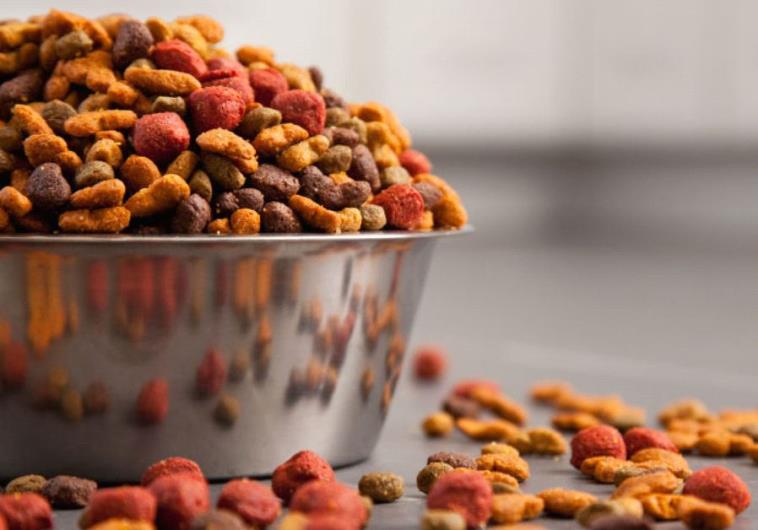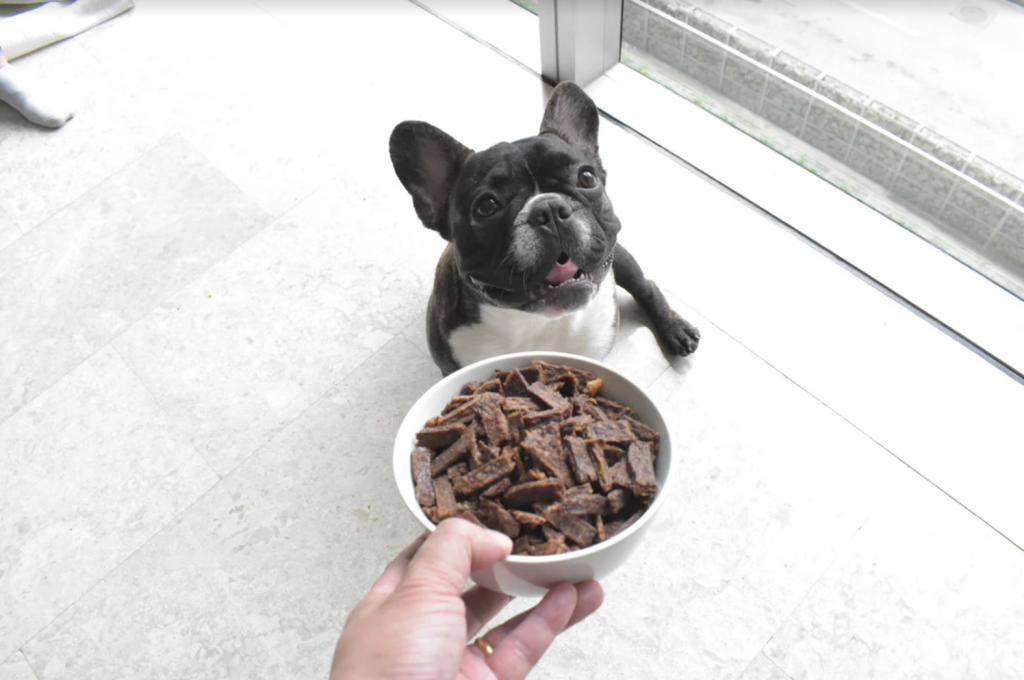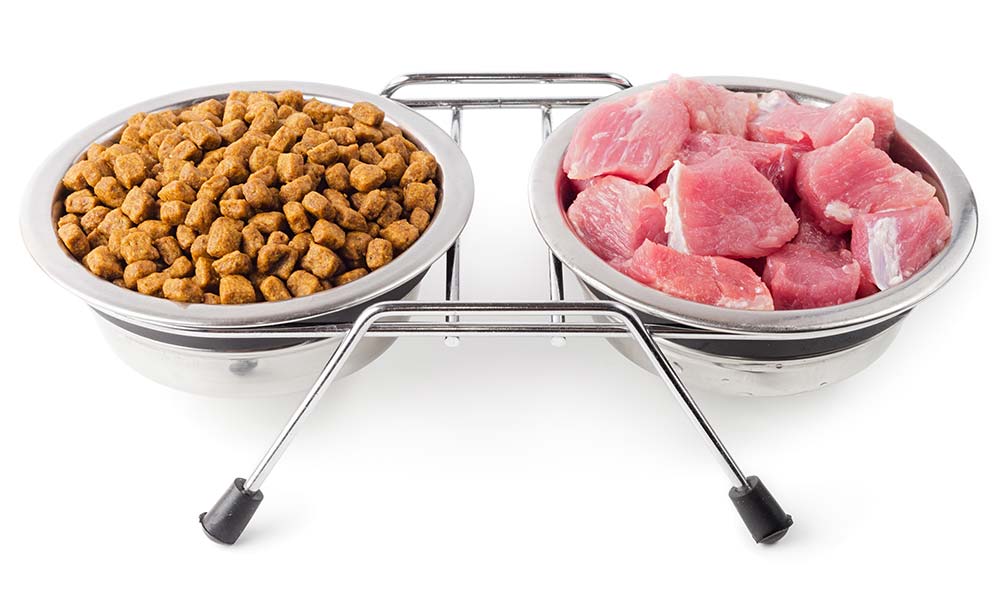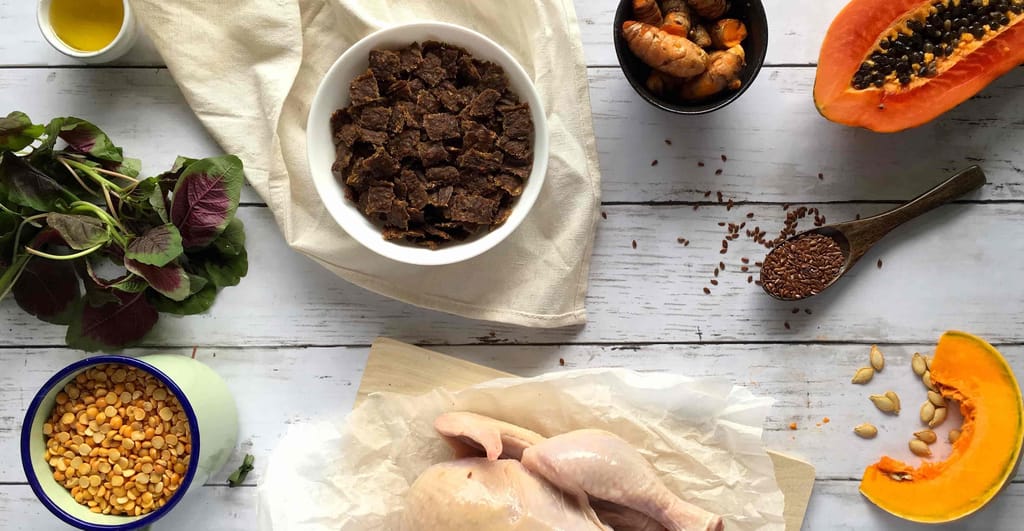It is very common to shop for pet food when we shop for our own groceries in retail stores. After all, pets are family, right? The most common type of dog food available in these sources is kibbles. Many pet parents in the community may reach out to grab a bag of kibbles for their pups by default. Some pet parents are also not aware of the different types of dog food available in the market.
A rising number of pet parents conduct the necessary research into dog food before making a purchase. It is with much pleasure that we see this trend growing slowly, and we are here to help you on your journey of better health for your pups!
Kibbles
Short answer: rendered meat meals, 4D meats, additives including colouring and flavouring, preservatives, synthetic vitamins… and the list could go on.

Long answer:
If you were to describe kibbles as a human-grade food, one of the closest comparisons would be nuggets. Kibbles, including premium, grain-free, organic, are all made via a process called extrusion.
Many of the ingredients that go into the product has already been processed before they even arrive at the production site. One of the best examples of these ingredients is meat meals, which are rendered products from mammals. According to AAFCO, these mammals may be regular cattle and pigs, and also goes beyond and could include mammals other than cattle, pigs, sheep or goats without further description.
4D meats refer to meat from the dead, deceased, destroyed or disabled animals, which, as suggested, are of low quality. Other ingredients used to make the final product may also be supermarket rejects that are not of human-grade.
Many manufacturers also use carbohydrates of low-cost such as potatoes and corn in high quantity to make up the volume for the product. These are usually referred to as ‘fillers’. Don’t get us wrong, potatoes and corn are still a great source of food for your furkids, just not when they are consumed in large amounts, moreover of low quality.
These ingredients are then put together and made into a mix, which is then heated with extremely high heat and pressure. This process destroys many nutrients from any natural ingredients present from the mix. The mix is then shaped and dried, which results in a boring, dry, unappetising-looking little balls. The little balls are then added with colourings and flavourings to increase palatability. To make up for the lost nutrients, synthetic vitamins are also coated onto the product before they are packed into bags.
Air-dried
Short answer: meats, organs, bones, fruits and vegetables, possibly other superfoods

Long answer:
Food drying has been a preservation technique that has been around since ancient times, as early as 12,000 B.C… Salami anyone? Rapid progress in technology and probably many rainy days led to the creation of air-drying machines, or a simpler term for it would be a dehydrator, which is a moisture-removing machine. You get it.
Air-dried dog food is not cooked, and as heat involved during the air-drying process is low, heat-sensitive nutrients are very much protected and minimal damage to the amino acids, enzymes and vitamins as compared to that of kibbles. The end product also has a long shelf life without the use of preservatives due to the low moisture content, which discourages the growth of microorganisms and bacteria.
Fresh ingredients are introduced into drying chambers, low-temperature heated air is blew into the drying chamber over the course of many hours until the moisture content of the fresh ingredients is removed to the desired level. Air-dried dog food keeps the nutrients from the natural ingredients protected, but also provides the scoop-and-feed convenience for pet parents.
Final thoughts

Image credit: Global Pet Foods
Kibbles are usually produced in a mass manufacturing production site in huge batches, which undoubtedly makes the final retail price more economical to feed. However, it is still crucial to include fresh, real food into your pup’s diet to keep them healthy and nutritionally balanced. With a well-balanced diet, health goes a long way for your furkids. Do your research today!
You may like:
- Top 5 Benefits of Fish for Dogs in a Nutshell
- The Consequences of High Temperatures in Pet Food
- 5 Misleading Label Tricks Pet Food Brands Use in 2019
- 7 Simple Steps to Help with Excessive Dog Chewing
PledgeCare’s blog posts are designed to help and inspire dog parents who wish a healthier every day for their dogs. If you’re curious about our air-dried raw, Malaysian, human-grade and super healthy dog food, check out: https://pledgecare.org

